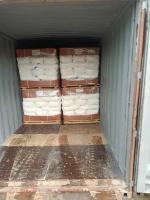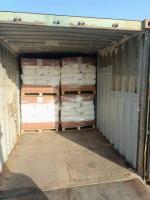Our Products
Polyacrylamide / anionic polyacrylamide AN934 AN923 can be replaced by Chinafloc A3018 and Chinafloc A2015

anionic polyacrylamide AN934 AN923 can be replaced by Chinafloc A3018 and Chinafloc A2015
anionic polyacrylamide AN934 AN923 are two models with medium and high hydrolysis degree and different molecular weight mainly used for water treatment ,Chinafloc A3018 and Chinafloc A2015 can replace of them with good permanace
Anionic polyacrylamide (APAM) is an essential chemical in water treatment processes, particularly in wastewater treatment, industrial water purification, and sludge dewatering. Its effectiveness in these applications lies in its ability to act as a flocculant, coagulant, and thickening agent. The anionic nature of this polyacrylamide makes it especially useful for treating water with high concentrations of suspended solids, organic matter, and other negatively charged particles. In this comprehensive discussion, we will delve into the specific functions and mechanisms by which anionic polyacrylamide is employed in water treatment, exploring its role in enhancing water quality, improving process efficiency, and contributing to environmental sustainability.
Introduction to Anionic Polyacrylamide
Anionic polyacrylamide (APAM) is a water-soluble polymer that contains negatively charged carboxylate groups along its molecular chain. This negative charge allows it to interact effectively with positively charged particles, as well as with various colloids and organic materials that are commonly found in wastewater and industrial effluents. The primary function of anionic polyacrylamide in water treatment is to facilitate the aggregation of these particles into larger flocs, which can then be more easily separated from the water through sedimentation, flotation, or filtration.
Function in Water Treatment
Anionic polyacrylamide serves multiple functions in water treatment processes, each of which is critical for achieving high-quality treated water and efficient process operations. These functions include:
-
Coagulation and Flocculation: The most significant function of anionic polyacrylamide in water treatment is its role as a flocculant and coagulant. In wastewater containing suspended solids and colloidal particles, these particles often carry a net negative charge, leading to mutual repulsion and preventing them from settling. Anionic polyacrylamide, with its negatively charged polymer chains, interacts with these particles, neutralizing their charges and bridging them together to form larger flocs. This process, known as flocculation, enhances the sedimentation or flotation of particles, making it easier to remove them from the water.
-
Suspended Solids Removal: Anionic polyacrylamide is particularly effective in the removal of suspended solids from water. These solids, which may include clay, silt, organic matter, and industrial by-products, can cause turbidity and reduce water quality. By promoting the aggregation of these solids into flocs, anionic polyacrylamide allows them to settle more rapidly or to be captured more efficiently by filtration systems, leading to clearer, cleaner water.
-
Organic Matter Reduction: Organic matter, such as proteins, fats, oils, and natural organic materials, often contributes to the pollution load in wastewater. Anionic polyacrylamide is effective in binding with these organic molecules, facilitating their removal from the water. This not only improves water quality but also reduces the biological oxygen demand (BOD) and chemical oxygen demand (COD) of the treated water, making it safer for discharge or reuse.
-
Color Removal: Industrial effluents often contain dyes and other colored compounds that are difficult to remove using conventional treatment methods. Anionic polyacrylamide can assist in the removal of these colorants by flocculating the dye molecules and other color-causing substances, enabling them to be separated from the water. This is particularly important in industries such as textiles, pulp and paper, and food processing, where the discharge of colored wastewater is a major environmental concern.
-
Phosphorus Removal: Phosphorus is a common pollutant in wastewater, particularly from agricultural runoff and certain industrial processes. Excess phosphorus in water bodies can lead to eutrophication, causing algal blooms and oxygen depletion. Anionic polyacrylamide can help in the removal of phosphorus by forming flocs with phosphorus-containing compounds, which can then be removed through sedimentation or filtration. This contributes to the prevention of water body eutrophication and supports compliance with environmental regulations.
-
Sludge Thickening and Dewatering: In addition to its role in treating the liquid phase of wastewater, anionic polyacrylamide is also used in the treatment of sludge. Sludge, which is the by-product of wastewater treatment, often contains a high water content, making it bulky and difficult to manage. Anionic polyacrylamide is used to thicken sludge by promoting the aggregation of fine particles, thereby increasing the solids content of the sludge. This process, known as sludge thickening, reduces the volume of sludge and improves the efficiency of subsequent dewatering operations.
Mechanism of Action
The effectiveness of anionic polyacrylamide in water treatment can be attributed to its unique mechanism of action, which involves several key processes:
-
Electrostatic Attraction: Anionic polyacrylamide contains negatively charged carboxylate groups that can interact with positively charged ions and particles in water. This electrostatic attraction helps to neutralize the charges on suspended particles, reducing their repulsion and allowing them to come together to form larger aggregates or flocs.
-
Bridging Mechanism: In addition to charge neutralization, anionic polyacrylamide also works through a bridging mechanism. The long polymer chains of anionic polyacrylamide can span across multiple particles, effectively "bridging" them together into larger flocs. This bridging mechanism is particularly important for enhancing the flocculation of fine particles and colloids that might otherwise remain in suspension.
-
Adsorption and Sweep Flocculation: Anionic polyacrylamide can adsorb onto the surface of particles, further promoting their aggregation. In some cases, the polymer chains can form a network or matrix that "sweeps" smaller particles into the growing flocs, enhancing the overall effectiveness of the flocculation process. This is particularly useful in treating water with high concentrations of fine particles.
-
Hydrophobic Interactions: In cases where the wastewater contains hydrophobic organic materials, anionic polyacrylamide can facilitate their removal through hydrophobic interactions. The polymer can adsorb onto hydrophobic particles, promoting their aggregation and subsequent removal from the water.
Applications in Different Industries
Anionic polyacrylamide is used in a wide range of industries, each of which requires specific water treatment solutions. Some of the key applications include:
-
Municipal Wastewater Treatment: In municipal wastewater treatment plants, anionic polyacrylamide is used to improve the removal of suspended solids, organic matter, and phosphorus. It is also used in sludge thickening and dewatering processes, helping to reduce the volume of sludge for disposal.
-
Industrial Wastewater Treatment: Many industries, including textiles, pulp and paper, mining, and food processing, produce wastewater that contains high levels of suspended solids, organic matter, and other pollutants. Anionic polyacrylamide is used to treat these wastewaters, improving water quality and ensuring compliance with environmental regulations.
-
Oil and Gas Industry: In the oil and gas industry, anionic polyacrylamide is used in the treatment of produced water, which is the water that comes to the surface during oil and gas extraction. This water often contains high levels of suspended solids, oil, and other contaminants, making it difficult to treat. Anionic polyacrylamide helps to flocculate these contaminants, making them easier to remove.
-
Mining and Mineral Processing: In mining operations, anionic polyacrylamide is used to treat the process water and tailings, which are the by-products of mineral extraction. It helps to remove suspended solids and recover valuable minerals from the process water, improving the efficiency of the operation and reducing the environmental impact of mining activities.
-
Textile and Dyeing Industry: The textile industry generates large volumes of wastewater containing dyes, organic matter, and other pollutants. Anionic polyacrylamide is used to remove these contaminants, ensuring that the wastewater meets regulatory standards before being discharged or reused.
-
Paper and Pulp Industry: The paper and pulp industry produces wastewater that contains high levels of organic matter, suspended solids, and other pollutants. Anionic polyacrylamide is used to treat this wastewater, improving the clarity and quality of the treated water and reducing the environmental impact of the industry.
Environmental and Economic Benefits
The use of anionic polyacrylamide in water treatment offers several environmental and economic benefits:
-
Improved Water Quality: By effectively removing suspended solids, organic matter, and other pollutants, anionic polyacrylamide helps to produce cleaner, higher-quality water that can be safely discharged into the environment or reused in industrial processes. This contributes to the protection of water bodies and ecosystems.
-
Cost-Effective Treatment: Anionic polyacrylamide is highly effective even at low dosages, making it a cost-effective solution for water treatment. Its use can reduce the need for other chemicals, lower energy consumption, and improve the overall efficiency of water treatment processes.
-
Reduced Sludge Volume: By enhancing sludge thickening and dewatering, anionic polyacrylamide helps to reduce the volume of sludge that needs to be handled, transported, and disposed of. This not only lowers disposal costs but also minimizes the environmental impact of sludge disposal.
-
Energy Savings: The improved efficiency of water treatment and sludge dewatering processes provided by anionic polyacrylamide results in lower energy consumption. This reduces the operational costs of water treatment plants and contributes to a lower carbon footprint.
-
Compliance with Regulations: The use of anionic polyacrylamide in water treatment helps industries and municipalities meet stringent environmental regulations, particularly those related to the discharge of pollutants into water bodies. This ensures that operations remain compliant and avoid potential fines or penalties.



757_small.jpg)

